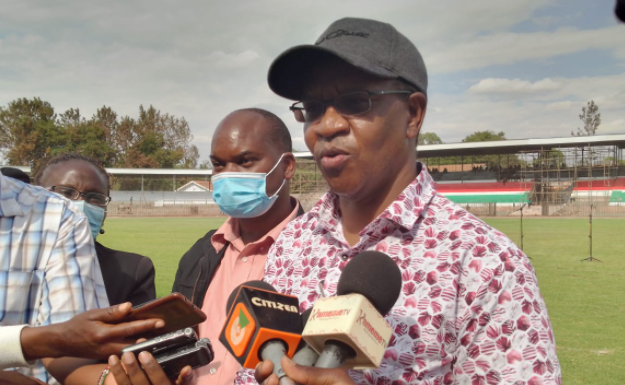State launches guide to curb violent extremism in schools on the rise, new report warns

Schools in Coast, Eastern, North Eastern and Nairobi have witnessed an increase in cases of radicalisation into violent extremism, terrorism and cultism.
The recruiters, according to security agencies, are now targeting children even as young as eight years to join the outlawed groups.
At least one school in Isiolo county, three in Nairobi county and several others in the Coast region have been identified as places where extremists are actively recruiting the young children.
In one of the cases reported about three months ago, more than 15 boys aged between 12 and 17 from the South Coast were arrested in the neighbouring country.
They were headed to Mozambique to join the al Shabaab and al-Sunna wa Jama’ah linked to the terror group Islamic State.
As a result, the Ministry of Education has partnered with the security agencies to prevent radicalisation.
It has also issued a guide that among other things, also highlights the likely behavioural characteristics displayed by the learner at various risk levels.
The initiative aims at, among others, helping teachers to prevent, detect and respond to radicalisation.
To keep up the tempo of attacks, the al Shabaab militants have continually sought to recruit and build a base of sympathizers, according to the security agencies.
The bulk of these efforts are aimed at the young people, particularly those of school-going age, who have been identified as highly vulnerable to such recruitment.
Unique dynamics such as high concentration of already institutionalised young people, make such institutions easy targets.
Another concern to the education and security officials is the increased unrest among learners, some leading to arson attacks in schools.
Such acts interfere with curriculum delivery, lower access to education and undermine teacher authority in instilling discipline.
“While this may not necessarily be because of violent extremism, it provides fertile ground for engagement with extremist groups,” the report states.
The challenge is further exacerbated by the fact that about 20 per cent of children are aware of recruitment of children into terrorist activities, with an also same number aware of children who had been involved in acts of terrorism.
According to the security agencies, children have in the past been used for different purposes such as carrying out attacks, recruiting for terror groups and being taught how to use weapons.
Attacks targeting schools is a global problem, for example in 2014, Boko Haram in Nigeria kidnapped 276 school girls from Chibok Girls School.
The Ministry partnered with the National Counter Terrorism Centre (NCTC) and came up with guidelines dubbed ‘Child Safety and Security Guide to Counter Violent Extremism Conducive to Terrorism’ to contain the spread.
Push and Pull factors
Teachers in basic learning institutions will play a key role of protecting students from these dangers, even as they deliver critical thinking skills that build resilience against the lure of the radicaliser.
Tutors are also resource persons, advisers and first reference points in any matter relating to prevention, detection and response to violence or extremism against children at school level.
“It is, therefore, paramount to empower the teacher as the link between the school and the child protection in preventing, detecting and effectively responding to violent extremism,” the guidelines state.
The guide will also provide the necessary knowledge, awareness and reporting lines to prevent and respond to attempts to entrench or promote violent extremism conducive to terrorism in schools.
According to the report, learners are more prone to drivers of radicalisation into violent extremism, which can be grouped into “push” and “pull” factors.
The “push” factors, which forces learners to join such groups, include inequality, marginalisation, unemployment, weak family ties and extremist religious indoctrination. They are also aggravated by “pull” factors, which attract learners to join, including peer pressure, perceived material incentives, desire for revenge, ideology and negative internet and media influence.
The guide also provides for a linkage between drug abuse, gender-based violence and violent extremism.
A probe established that the prevalence of illegal narcotics and alcohol abuse could be exploited by criminal gangs as a lure, later offering a path to violent extremist recruitment.
To facilitate prompt reporting and follow-up of suspicious or incidents related to Child Safety and Security Against Violent Extremism (CSSAVE), a toll free number is provided.
A confidential reporting tool has also been provided for documenting incidents that require intervention at each level.
Warning signs
The guide highlights the likely behavioural characteristics displayed by the learner at various risk levels based on the threat of the affected learner.
Low-risk level learners are those who are vulnerable to radicalisation, if not already exposed based on their social behaviour.
Such learners are said to be highly opinionated and rarely tolerate different views from others, display weak identity anger and dissatisfaction.
These students should be exposed to mentorship programmes and be educated on the positive use of the Internet.
The medium risk level learners are those who have been exposed to radical ideologies and views consistent with violent extremism.
Usually they display incoherent outbursts and threaten violence plus drastic changes in attitude and behaviour that point to acquisition of new beliefs and values.
They also display emotional imbalance and increasingly isolate themselves and become more secretive.
Students in this group should be referred for behavioural assessment or the school chaplaincy and imams.
The high risk level learners are those who have been radicalised into extremism but not violent. They are usually withdrawn and isolated besides displaying hatred, fanaticism and cultism.
They also identify with violent extremism groups and subscribe to their values that are intolerant to other beliefs.
In such cases the NCTC, parents, counsellors should be involved, and the school administration should also get trained assistance to NCTC advice.











